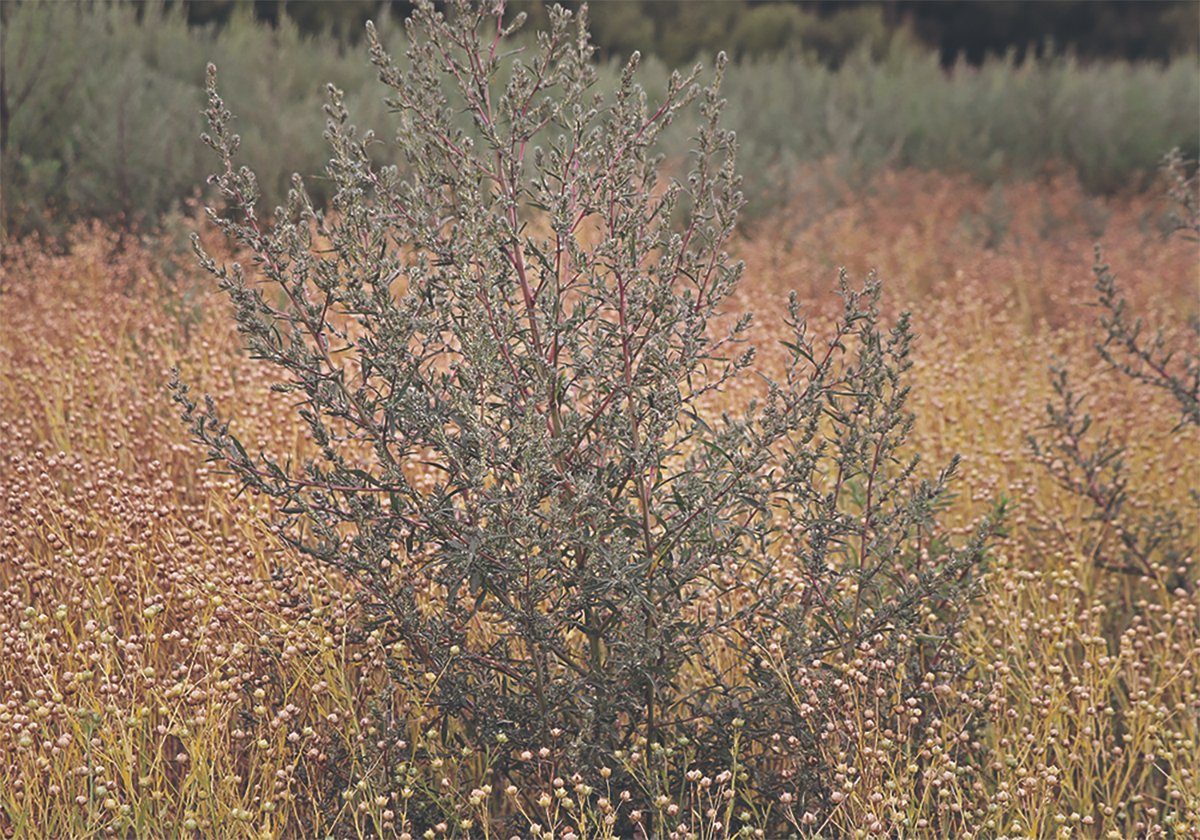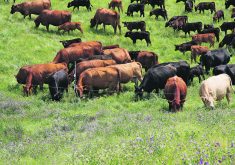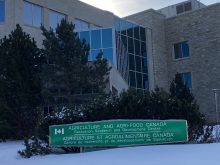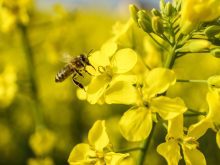Organic challenges
Doug Bone brings forth a number of challenges farmers face, especially
those explaining organic food production (Not organic, Open Forum, Aug.
15) and manages to box or label farmers based on their beliefs or
production methodology.
While Bone promotes the religious aspects of some organic certification
organizations – “to grow organic food, the heart and mind of the farmer
must be committed to the principles of organic farming” – he ignores
the fact that organic is becoming big business with a clear focus on
Read Also

Kochia has become a significant problem for Prairie farmers
As you travel through southern Saskatchewan and Alberta, particularly in areas challenged by dry growing conditions, the magnitude of the kochia problem is easy to see.
economics and the bottom line.
As a farmer, whether it’s with genetically engineered crops or
organics, I can see strengths and weaknesses.
A good idea is just that. To say, because I see benefit in GE potatoes
and sweet corn, that I can’t be an organic farmer is absurd. Such
doctrinal commitment blinds farmers and consumers from deriving the
benefits of a variety of production techniques, on different farms in
different geographic locations. Based on my market experience,
customers see little difference between using Bt as a spray or (having
it) genetically engineered into a crop.
Bone also fails to see the complexity of different crops. We grow crops
from the simple – peas, beans and leafy lettuce, which lend themselves
to organic production – to the complex, which will challenge any farmer
regardless of their capabilities or methodology. …
To say that I have to believe in organic (and Bone assumes I don’t) and
commit everything immediately is one of the reasons that we are losing
the organic market share in produce to the U.S. and Mexico by the
minute.
Now that the big chains are stocking organic produce, they want price,
continuity of supply and variety. Can we supply? Apparently not. Last
night I checked my local Zehrs/Loblaws store, and the labelling
indicated that 100 percent of the organic produce was from the U.S. or
Mexico. Where does that leave me as a produce farmer in Ontario
interested in organic for all the wrong reasons (according to Bone)?
Life has taught me to crawl before I can walk, and walk before I can
run.
All the public opinion polls suggest the public likes the premise of no
pesticides but have concerns about the affordability, especially in low
income areas. What is Bone doing to articulate the fact that organics
are priced where they are?
I have been a very vocal defender about the organic premium and explain
why. Produce with the higher level of manual work, such as organics,
will cost more. As with GM technology, position to the consumers what
it means, in a context they can relate to. Provide as much
material/answers to questions and let them choose. We don’t force
anything, product or opinions.
The coming of age of organics will require a level of accountability,
scrutiny, and explanations to the public, in a context they can relate
to. Is the industry up to the challenge? Wouldn’t it be better to work
together rather than take shots within?
– Jeff Wilson
Orton, Ont.
Just in time
D’Arce McMillan presented an excellent analysis of the world wheat
market situation in recent times, in your paper last week.
Traditionally, grain buyers have stockpiled grain stocks to hedge
against uncertainty of supply, but recently they have been shifting
more towards a “just-in-time” delivery method. World wheat consumption
has exceeded production in the last several years, but prices have not
risen accordingly, as grain buyers have chosen to deplete the stocks
rather than stimulate production and/or grain selling by raising their
prices.
The “just-in-time” method has worked fairly well in other industries
like manufacturing, mining and petroleum, where production and
transportation methods are quite reliable, but farming is a bit
different.
The current crop of MBAs entering the grain business have been taught
that “just-in-time” delivery is the way to win the game, but the wiser
ones know that wheat is not made in a factory or pumped out of the
ground.
Agricultural grain production contains a greater degree of uncertainty
unfamiliar to most other industries; it’s called weather.
As the world grain stocks fall toward zero, it may come to pass that
grain buyers find themselves without reserve stocks, and (are) forced
to pay a price for wheat that is more appropriate to the demand, the
cost of production and the risk involved.
I suppose that would be better for farmers overall, as it would give
farmers a degree of control in pricing their product based on knowledge
of world grain stocks and an ability to better anticipate the potential
demand, and subsequent pricing levels.
– Greg Popove,
Bashaw, Alta.
Cost benefit
The cost to farmers of running the (Canadian) Wheat Board bureaucracy
has gone up by 50 percent in the last five years, an increase of $20
million. Meanwhile, volumes of grain have declined. Therefore, cost per
bushel has more than doubled.
The CWB spokesman says, “it’s simplistic to suggest the board’s
spending be tied to sales.” He’s right. Their costs should be going
down, not up. Regardless of volumes.
The CWB is an information-based creation. Let’s face it, they don’t
handle the grain, they don’t add value to it. They just handle the
money. Farmers’ money.
In the information sector of the economy, the use of technology has
increased efficiency and productivity. Costs are continually
decreasing. Where businesses have to compete, that is. Government
monopolies do not have to reflect this cost-decrease benefit.
The CWB has the ultimate checkoff. They take all the money from our
grain and just give us what is left. That doesn’t give them the right
to spend lavishly. It just makes it possible.
– Jim Pallister,
Portage la Prairie, Man.
Use grasslands
The Government of Canada has an obligation to assist the
drought-stricken livestock producers by opening up portions of the
Grasslands Park to the harvesting of hay.
A recent tour of the west block of the Grasslands Park in the Val
Marie, Sask., area indicates a substantial amount of unharvested hay in
the Frenchman River flats and some of the upper benches. This land is
within the jurisdiction of Parks Canada.
Hay in the low lands is higher than the belly of a cow and has a high
yield of mainly brome grass. A lesser yield of mainly seeded crested
wheat grass exists on some of the benches.
Heavy recent rains in this area may have created minor flooding and
that in general some of the fields are small in size.
In this drought crisis, Parks Canada should immediately make the hay
lands of previous years available in the east and west blocks of Parks
Canada.
Furthermore, the Grasslands is in transition of going from rancher
occupied lands of recent times to a national park. Thus, it wouldn’t
create significant hardship for the tourists and the occupying wildlife
to have a low percentage of lands revert back to supplying livestock
forage.
By doing nothing, Parks Canada is contributing to a very severe future
fire problem in the park and to the neighbouring ranchers. Furthermore,
Parks Canada has a situation that with lush growth the ecosystem is
much different than in the days when the land was privately ranched or
when the buffalo roamed the lands in the 1800s.
The utilization of the seeded grassland on lands such as the Grasslands
Park should be part of the planning in solving our drought dilemma.
– Howard Mattila,
North Battleford, Sask.
Youth potential
I agree with the sentiments contained in the Aug. 29 editorial
“Strategies needed to keep youth.” As an organization with roots
grounded in rural Canada, 4-H has long been concerned with all issues
affecting rural youth. We have always known within the 4-H organization
that our alumni grow up to become leaders in business, farming,
government and volunteer work.
Our recent comprehensive survey, Measures of Success II, proves with
hard data that our alumni become future leaders in their communities.
The survey, conducted in conjunction with Ipsos-Reid, determined that
4-H alumni earn considerably higher salaries, attain higher education
and stay more involved with their communities when compared to the
Canadian average. The survey found at the same time that in order for
the program to survive and thrive, further investment is required.
Your editorial states: “If communities are serious about keeping or
attracting youth, first they need to believe rural youth have potential
and make them a priority ….” Many businesses and individuals are
already doing exactly this, whether by supporting their local 4-H Club
or volunteering their time as leaders. Indeed, it is precisely these
young people – so full of potential and promise – in which we should be
investing, as they truly represent the future of both our rural and
non-rural communities. I believe in this case “community” should
encompass all facets of our communities – business, government and the
general public combined.
Further support of organizations like 4-H today is, in my opinion, a
wise investment for our collective future. In the specific case of
rural youth, 4-H plays an especially significant role in offering
enriching opportunities. In fact, our alumni credited the program for
their career and life success, due in large part to the
self-confidence, leadership and communication skills they learned in
4-H.
These former 4-H members in turn contribute greatly to their own
communities…
– Elizabeth Crouse,
President, Canadian
4-H Council,
Truro, Nova Scotia
















